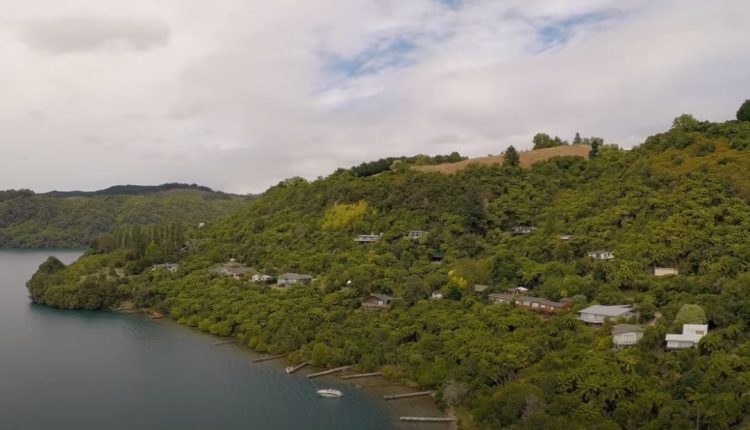Beneath the Surface: Major Magnetic Anomaly Discovered Deep in Lake Rotorua, New Zealand
Lake Rotorua, nestled at the heart of a dormant volcano on New Zealand’s North Island, has long been shrouded in myth and legend, serving as the backdrop for one of the country’s most famous Māori love stories.
Recently, groundbreaking maps have peeled back the layers of mystery surrounding the lake, exposing a hidden hydrothermal system beneath its surface.
Lake Rotorua’s Unique Magnetic System
The detailed mapping, conducted by researchers at GNS Science, marks the first time Lake Rotorua’s floor has been scrutinized with such precision.
The lake’s rich history is intertwined with the tale of a chief’s daughter overcoming forbidden love by embarking on a daring swim across its waters to reunite with her beloved young warrior.
Beyond its romantic folklore, the Rotorua region is renowned for its hydrothermal activity, with steam clouds drifting around the lake’s shores and sulfur imparting a mesmerizing “magical green-blue” hue to the water.
GNS Science’s mapping initiative, covering approximately 68% of the lake’s floor, has brought forth intriguing discoveries. Eruption craters, an ancient river, and a substantial magnetic anomaly in the southern part of the lake have been unveiled.
These revelations confirm, for the first time, that the hydrothermal systems originating from Rotorua’s mainland extend into the lake’s concealed depths.
Cornel de Ronde, a principal scientist at GNS Science, likened the experience of seeing the maps to wearing glasses for the first time, enabling a clearer view of the fine print.
The data, spanning 21 square miles (55 square kilometers), was collected with the assistance of the Royal New Zealand Navy, utilizing a multibeam echo sounder and magnetic surveys that revealed the intriguing magnetic anomaly.
Hydrothermal Anomaly Unveiled Below the Surface

Uniquely, the magnetic anomaly in Lake Rotorua contradicts the typical response seen in volcanic rocks.
Instead of positive anomalies associated with magnetite-rich rocks, the lake exhibits negative anomalies, likely attributed to hydrothermal processes transforming magnetite into pyrite, or fool’s gold, which possesses minimal magnetic signal.
The researchers also identified additional signs of hydrothermal activity, such as craters in the vicinity of the magnetic anomaly, likely resulting from hydrothermal eruptions.
A heat flow map illustrated rising heat, possibly hot water, from beneath the lake floor. Despite this activity, the lake’s bottom maintains a cool temperature of around 57 degrees Fahrenheit (14 degrees Celsius) due to its size, effectively counteracting the heat from below.
While these temperature fluctuations might go unnoticed by swimmers, the instrumentation utilized by the researchers has unveiled a complex and dynamic hydrothermal system beneath Lake Rotorua, adding another layer of fascination to this iconic New Zealand landmark.

